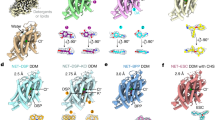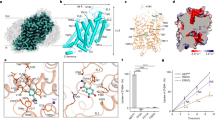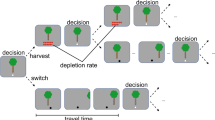Abstract
A challenge in drug dependence is to delineate long-term neurochemical modifications induced by drugs of abuse. Repeated d-amphetamine was recently shown to disrupt a mutual regulatory link between noradrenergic and serotonergic neurons, thus inducing long-term increased responses to d-amphetamine and para-chloroamphetamine, respectively. We show here that such a sensitization of noradrenergic and serotonergic neurons also occurs following repeated treatment with cocaine, morphine, or alcohol, three compounds belonging to main groups of addictive substances. In all cases, this sensitization is prevented by α1b-adrenergic and 5-HT2A receptors blockade, indicating the critical role of these receptors on long-term effects of drugs of abuse. However, repeated treatments with two non-addictive antidepressants, venlafaxine, and clorimipramine, which nevertheless inhibit noradrenergic and serotonergic reuptake, do not induce noradrenergic and serotonergic neurons sensitization. Similarly, this sensitization does not occur following repeated treatments with a specific inhibitor of dopamine (DA) reuptake, GBR12783. Moreover, we show that the effects of SCH23390, a D1 receptor antagonist known to inhibit development of d-amphetamine behavioral sensitization, are due to its 5-HT2C receptor agonist property. SCH23390 blocks amphetamine-induced release of norepinephrine and RS102221, a 5-HT2C antagonist, can reverse this inhibition as well as inhibition of noradrenergic sensitization and development of behavioral sensitization induced by repeated d-amphetamine. We propose that noradrenergic/serotonergic uncoupling is a common neurochemical consequence of repeated consumption of drugs of abuse, unrelated with DA release. Our data also suggest that compounds able to restore the link between noradrenergic and serotonergic modulatory systems could represent important therapeutic targets for investigation.
Similar content being viewed by others
Log in or create a free account to read this content
Gain free access to this article, as well as selected content from this journal and more on nature.com
or
References
Amargos-Bosch M, Adell A, Bortolozzi A, Artigas F (2003). Stimulation of alpha1-adrenoceptors in the rat medial prefrontal cortex increases the local in vivo 5-hydroxytryptamine release: reversal by antipsychotic drugs. J Neurochem 87: 831–842.
Auclair A, Drouin C, Cotecchia S, Glowinski J, Tassin J-P (2004). D1 dopamine receptor activation is necessary for the induction of sensitization by amphetamine in the ventral tegmental area. Eur J Neurosci 20: 3073–3084.
Baraban JM, Aghajanian GK (1980). Suppression of firing activity of 5-HT neurons in the dorsal raphe by alpha-adrenoceptor antagonists. Neuropharmacology 19: 355–363.
Bonhaus DW, Flippin LA, Greenhouse RJ, Jaime S, Rocha C, Dawson M et al (1997). RS-102221: a novel high affinity and selective, 5-HT2C receptor antagonist. Neuropharmacology 36: 621–629.
Bortolozzi A, Artigas F (2003). Control of 5-hydroxytryptamine release in the dorsal raphe nucleus by the noradrenergic system in rat brain. Role of alpha-adrenoceptors. Neuropsychopharmacology 28: 421–434.
Conductier G, Crosson C, Hen R, Bockaert J, Compan V (2005). 3,4-N-methlenedioxymethamphetamine-induced hypophagia is maintained in 5-HT1B receptor knockout mice, but suppressed by the 5-HT2C receptor antagonist RS102221. Neuropsychopharmacology 30: 1056–1063.
Darracq L, Blanc G, Glowinski J, Tassin JP (1998). Importance of the noradrenaline-dopamine coupling in the locomotor activating effects of D-amphetamine. J Neurosci 18: 2729–2739.
Dekeyne A, Millan MJ (2003). Discriminative stimulus properties of antidepressant agents: a review. Behav Pharmacol 14: 391–407.
Di Chiara G, Imperato I (1988). Drugs abused by humans preferentially increase synaptic dopamine concentrations in the mesolimbic system of freely moving rats. Proc Natl Acad Sci USA 85: 5274–5278.
Drouin C, Blanc G, Villegier AS, Glowinski J, Tassin J-P (2002a). Critical role of alpha1-adrenergic receptors in acute and sensitized locomotor effects of D-amphetamine, cocaine, and GBR 12783: influence of preexposure conditions and pharmacological characteristics. Synapse 43: 51–61.
Drouin C, Darracq L, Trovero F, Blanc G, Glowinski J, Cotecchia S et al (2002b). Alpha1b-adrenergic receptors control locomotor and rewarding effects of psychostimulants and opiates. J Neurosci 22: 2873–2884.
Everitt BJ, Wolf ME (2002). Psychomotor stimulant addiction: a neural systems perspective. J Neurosci 22: 3312–3320.
Florin SM, Kuczenski R, Segal DS (1994). Regional extracellular norepinephrine responses to amphetamine and cocaine and effects of clonidine pretreatment. Brain Res 654: 53–62.
Garattini S (1997). Pharmacology of amineptine, an antidepressant agent acting on the dopaminergic system: a review. Int Clin Psychopharmacol 12: 15–19.
Gobert A, Millan MJ (1999). Serotonin (5-HT)2A receptor activation enhances dialysate levels of dopamine and noradrenaline, but not 5-HT, in the frontal cortex of freely-moving rats. Neuropharmacology 38: 315–317.
Hamamura T, Akiyama K, Akimoto K, Kashihara K, Okumura K, Ujike H et al (1991). Co-administration of either a selective D1 or D2 dopamine antagonist with methamphetamine prevents methamphetamine-induced behavioral sensitization and neurochemical change, studied by in vivo intracerebral dialysis. Brain Res 546: 40–46.
Hnasko TS, Sotak BN, Palmiter RD (2005). Morphine reward in dopamine-deficient mice. Nature 438: 854–857.
Hyman SE, Malenka RC (2001). Addiction and the brain: the neurobiology of compulsion and its persistence. Nat Rev Neurosci 2: 695–703.
Itzhak Y, Achat-Mendes CN, Ali SF, Anderson KL (2004). Long-lasting behavioral sensitization to psychostimulants following p-chloroamphetamine-induced neurotoxicity in mice. Neuropharmacology 46: 74–84.
Jeziorski M, White FJ (1995). Dopamine receptor antagonists prevent expression, but not development, of morphine sensitization. Eur J Pharmacol 275: 235–244.
Johnson SW, North RA (1992). Opioids excite dopamine neurons by hyperpolarization of local interneurons. J Neurosci 12: 483–488.
Jolas T, Aghajanian GK (1997). Opioids suppress spontaneous and NMDA-induced inhibitory postsynaptic currents in the dorsal raphe nucleus of the rat in vitro. Brain Res 755: 229–245.
Koob GF, Sanna PP, Bloom FE (1998). Neuroscience of addiction. Neuron 21: 467–476.
Korf J, Bunney BS, Aghajanian GK (1974). Noradrenergic neurons: morphine inhibition of spontaneous activity. Eur J Pharmacol 25: 165–169.
Lovinger DM, White G, Weight FF (1989). Ethanol inhibits NMDA-activated ion current in hippocampal neurons. Science 243: 1721–1724.
Marek GJ, Aghajanian GK (1999). 5-HT2A receptor or alpha1-adrenoceptor activation induces excitatory postsynaptic currents in layer V pyramidal cells of the medial prefrontal cortex. Europ J Pharmacol 367: 97–206.
Millan MJ, Dekeyne A, Papp M, La Rochelle CD, MacSweeny C, Peglion JL et al (2001a). S33005, a novel ligand at both serotonin and norepinephrine transporters: II. Behavioral profile in comparison with venlafaxine, reboxetine, citalopram, and clomipramine. J Pharmacol Exp Ther 298: 565–580.
Millan MJ, Newman-Tancredi A, Quentric Y, Cussac D (2001b). The ‘selective’ dopamine D1 receptor antagonist, SCH23390, is a potent and high efficacy agonist at cloned human serotonin2C receptors. Psychopharmacology (Berlin) 156: 58–62.
Mitchell HA, Ahern TH, Liles LC, Javors MA, Weinshenker D (2006). The effects of norepinephrine transporter inactivation on locomotor activity in mice. Biol Psychiatry 60: 1046–1052.
Nestler EJ (2001). Molecular basis of long-term underlying addiction. Nat Rev Neurosci 2: 119–128.
Nestoros JN (1980). Ethanol specifically potentiates GABA-mediated neurotransmission in feline cerebral cortex. Science 209: 708–710.
Olson VG, Heusner CL, Bland RJ, During MJ, Weinshenker D, Palmiter RD (2006). Role of noradrenergic signaling by the nucleus tractus solitarius in mediating opiate reward. Science 311: 1017–1020.
Paulson PE, Camp DM, Robinson TE (1991). Time course of transient behavioral depression and persistent behavioral sensitization in relation to regional brain monoamine concentrations during amphetamine withdrawal in rats. Psychopharmacology (Berlin) 103: 480–492.
Paulson PE, Robinson TE (1995). Amphetamine-induced time-dependent sensitization of dopamine neurotransmission in the dorsal and ventral striatum: a microdialysis study in behaving rats. Synapse 19: 56–65.
Paxinos G, Franklin KBJ (2001). The Mouse Brain in Stereotaxic Coordinates, 2nd edn. Academic Press: San Diego, USA.
Pierce RC, Bell K, Duffy P, Kalivas PW (1996). Repeated cocaine augments excitatory amino acid transmission in the nucleus accumbens only in rats having developed behavioral sensitization. J Neurosci 16: 1550–1560.
Robinson TE, Berridge KC (1993). The neural basis of drug craving: an incentive-sensitization theory of addiction. Brain Res Rev 18: 247–291.
Robinson TE, Berridge KC (2000). The psychology and neurobiology of addiction: an incentive-sensitization view. Addiction 95: 91–117.
Salomon L, Lanteri C, Glowinski J, Tassin J-P (2006). Behavioral sensitization to amphetamine results from an uncoupling between noradrenergic and serotonergic neurons. Proc Natl Acad Sci USA 103: 7476–7481.
Segal DS, Kuczenski R (1992). In vivo microdialysis reveals a diminished amphetamine-induced DA response corresponding to behavioral sensitization produced by repeated amphetamine pretreatment. Brain Res 571: 330–337.
Sesack SR, Pickel VM (1992). Prefrontal cortical efferents in the rat synapse on unlabeled neuronal targets of catecholamine terminals in the nucleus accumbens septi and on dopamine neurons in the ventral tegmental area. J Comp Neurol 320: 145–160.
Szabo T, Blier P (2001). Functional and pharmacological characterization of the modulatory role of serotonin on the firing activity of locus coeruleus norepinephrine neurons. Brain Res 922: 9–20.
Tao R, Auerbach SG (2002). GABAergic and glutamatergic afferents in the dorsal raphe nucleus mediate morphine-induced increases in serotonin efflux in the rat central nervous system. J Pharmacol Exp Ther 303: 704–710.
Van Oekelen D, Luyten WH, Leysen J (2003). 5-HT2A and 5-HT2C receptors and their atypical regulation properties. Life Sci 72: 2429–2449.
Ventura R, Alcaro A, Puglisi-Allegra S (2005). Prefrontal cortical norepinephrine release is critical for morphine-induced reward, reinstatement and dopamine release in the nucleus accumbens. Cereb Cortex 15: 1877–1886.
Vezina P (1996). D1 dopamine receptor activation is necessary for the induction of sensitization by amphetamine in the ventral tegmental area. J Neurosci 68: 259–267.
Vezina P, Stewart J (1989). The effect of dopamine receptor blockade on the development of sensitization to the locomotor activating effects of amphetamine and morphine. Brain Res 499: 108–120.
Villegier AS, Blanc G, Glowinski J, Tassin J-P (2003). Transient behavioral sensitization to nicotine becomes long-lasting with monoamine oxidases inhibitors. Pharmacol Biochem Behav 76: 267–274.
White FJ, Joshi A, Koeltzow TE, Hu XT (1998). Dopamine receptor antagonists fail to prevent induction of cocaine sensitization. Neuropsychopharmacology 18: 26–40.
Wise RA (1998). Drug-activation of brain reward pathways. Drug Alcohol Depend 51: 13–22.
Yoshimoto K, McBride WJ, Lumeng L, Li TK (1992). Alcohol stimulates the release of dopamine and serotonin in the nucleus accumbens. Alcohol 9: 17–22.
Acknowledgements
We thank G Blanc and G Godeheu for skilful technical assistance. This work was supported by Inserm and MILDT (Mission interministérielle de lutte contre les drogues et les toxicomanies).
Author information
Authors and Affiliations
Corresponding author
Additional information
Disclosure/Conflict of Interest
The authors declare that, except from income received from our primary employers, no financial support or compensation has been received from any individual or corporate entity over the past 3 years for research or professional service and there are no personal financial holdings that could be perceived as constituting a potential conflict of interest.
Rights and permissions
About this article
Cite this article
Lanteri, C., Salomon, L., Torrens, Y. et al. Drugs of Abuse Specifically Sensitize Noradrenergic and Serotonergic Neurons Via a Non-Dopaminergic Mechanism. Neuropsychopharmacol 33, 1724–1734 (2008). https://doi.org/10.1038/sj.npp.1301548
Received:
Revised:
Accepted:
Published:
Issue date:
DOI: https://doi.org/10.1038/sj.npp.1301548
Keywords
This article is cited by
-
Behavioral and Noradrenergic Sensitizations in Vulnerable Traumatized Rats Suggest Common Bases with Substance Use Disorders
Molecular Neurobiology (2019)
-
Changes in dopamine, serotonin and their metabolites in brain microdialysates from rats following exposure to new psychoactive drugs
Forensic Toxicology (2017)
-
Extrasynaptic Glycine Receptors of Rodent Dorsal Raphe Serotonergic Neurons: A Sensitive Target for Ethanol
Neuropsychopharmacology (2014)
-
Repeated exposure to MDMA triggers long-term plasticity of noradrenergic and serotonergic neurons
Molecular Psychiatry (2014)
-
Central manipulation of dopamine receptors attenuates the orexigenic action of ghrelin
Psychopharmacology (2013)



